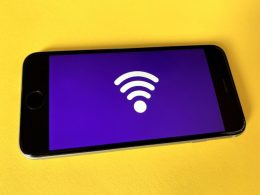Television has come a long way since its inception in the 1920s. From black and white to color, from rabbit ears to cable boxes, it has been an integral part of our lives for almost a century. However, in recent years, there has been a major disruption in the traditional TV model with the rise of cord-cutters. These are people who have ditched their cable subscriptions in favor of internet-based streaming services. In this blog post, we will explore how the internet has revolutionized television and what it means for the future of entertainment. Get ready to cut that cord!
The History of Cable TV
The history of cable TV dates back to the 1940s when cable systems were first developed to improve television reception in rural areas with poor signal strength. Initially, these systems only carried a few channels and were often used as community antennas.
In the 1970s, however, things changed dramatically. With the advent of satellite technology, it became possible for cable companies to offer hundreds of channels and take on traditional broadcast networks head-on.
Cable TV quickly gained popularity among consumers who enjoyed its wide range of programming options and improved picture quality compared to over-the-air broadcasts.
By the turn of the millennium, cable TV had become a dominant force in entertainment with millions of subscribers across the world. However, this dominance was soon challenged by new technologies that would further disrupt traditional television models.
Enter streaming services like Netflix and Hulu that allowed viewers to watch their favorite shows on-demand without having to subscribe to cable or satellite services. This marked the beginning of a new era in television where cord-cutting became increasingly popular among younger generations.
The Rise of the Cord-Cutter
In recent years, there has been a significant rise in the number of cord-cutters. A cord-cutter is someone who cancels their traditional cable or satellite TV subscription and relies on internet-based streaming services for their entertainment needs.
This trend has largely been driven by younger generations who are more tech-savvy and prefer the convenience of choosing what they watch, when they want to watch it. With so many options available through streaming platforms like Netflix, Hulu, Amazon Prime Video, and Disney+, traditional TV models have struggled to keep up.
Another factor contributing to the rise of cord-cutting is cost. Cable and satellite subscriptions can be expensive, with hidden fees and long-term contracts that consumers may find restrictive. Internet-based streaming services offer more affordable alternatives without requiring a commitment.
While there are some disadvantages to relying solely on internet-based television (such as limited live sports coverage), overall the popularity of cord-cutting continues to grow. As technology evolves even further and more people become comfortable with online streaming options, it’s likely that traditional television models will continue to decline while cord-cutting becomes increasingly mainstream.
The Advantages of the Internet for TV
The rise of the internet has brought forth several advantages for TV viewers, leading to a significant shift in how people consume entertainment. One of the most prominent benefits is the ability to access an endless variety of content from any location with an internet connection.
With streaming services like Netflix and Hulu, viewers can watch their favorite TV shows and movies at any time without worrying about missing an episode or having to wait for reruns. Additionally, many streaming services offer exclusive content that cannot be found on traditional cable networks.
The convenience factor is another advantage of using the internet for TV. Viewers no longer have to adhere to a strict programming schedule or sit through commercials during their favorite shows. They can pause, rewind, fast-forward and skip episodes as they please.
Moreover, online platforms allow viewers to interact with each other across different social media channels while watching shows simultaneously. This feature adds another level of engagement between fans and provides additional insight into trending topics related to specific programs.
Lastly but not least important are cost savings – Streaming services tend to offer more affordable options than traditional cable packages which make it easy for cord-cutters looking for cheaper alternatives without compromising quality or quantity.
The Disadvantages of the Internet for TV
While the internet has brought significant advantages to TV viewers, there are also some drawbacks that cannot be ignored. One of the main disadvantages is the issue of reliability and consistency in streaming quality. As more people cut their cords and turn to online streaming services, this puts a strain on bandwidth which can cause buffering and interruptions in service.
Another disadvantage is the cost associated with accessing all desired content. While cable packages may have been expensive, they often provided access to a variety of channels at one price point. With the emergence of multiple streaming platforms such as Netflix, Hulu, Amazon Prime and Disney+, users need to subscribe to each service separately resulting in increased costs.
The lack of live sports coverage is another downside for avid sports fans who have turned away from traditional cable models but find it difficult to access games through online streaming services. Live sporting events require higher video quality than other types of programming, making them more challenging for networks to provide over an internet connection.
Not all shows or movies are available on every platform due to licensing agreements between networks and studios which limit availability across different regions or countries.
While there are several limitations when it comes watching TV via Internet connectivity these downsides continue being overcome by technological advancements made daily thereby providing cutting-edge solutions for customers’ entertainment needs.
The Future of TV
The future of TV is a topic that has been heavily discussed in recent years. With the rise of cord-cutting and streaming services, traditional TV models are being disrupted. One major trend that is expected to continue in the future is the shift towards on-demand content.
Consumers want to be able to watch what they want when they want it, rather than being tied down to a set schedule. Streaming services like Netflix and Amazon Prime have capitalized on this desire for flexibility, offering entire seasons of shows all at once so viewers can binge-watch at their leisure.
Another trend that will likely shape the future of TV is increased personalization. As technology advances, companies will be able to collect more data about individual viewers’ preferences and habits. This information can then be used to tailor recommendations and advertising specifically for each person.
We can expect continued innovation in terms of delivery methods for TV content. Virtual reality and augmented reality are both emerging technologies that could revolutionize how we experience television shows and movies.
It’s clear that there are exciting changes ahead for the world of television. While some may mourn the loss of traditional cable packages, others will embrace new ways of consuming media as they become available.
Conclusion
The rise of cord-cutting has disrupted the traditional TV industry, and it is a trend that is only set to continue. The emergence of the internet as a viable platform for watching TV has given consumers more choice and control over what they watch, when they watch it, and how much they pay for it.
The advantages of the internet for TV are clear – access to an almost limitless amount of content, on-demand viewing options, flexible pricing models, and greater interactivity with viewers. However, there are also some disadvantages that come with relying solely on the internet for your TV needs.
Despite this, it seems likely that we will see even further disruption in the years ahead. Streaming services like Netflix have already changed the game when it comes to original programming and distribution methods. As technology continues to evolve at breakneck speed, new players will emerge and existing ones will innovate in order to stay relevant.
In conclusion then: Whether you’re a die-hard fan of traditional cable or an enthusiastic adopter of streaming services (or somewhere in between), one thing is certain: our relationship with television is changing rapidly thanks to advances in technology – both good and bad – which shows no sign of slowing down any time soon!












